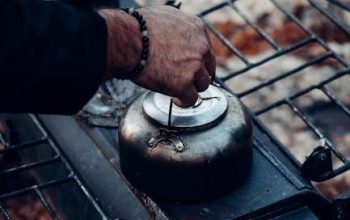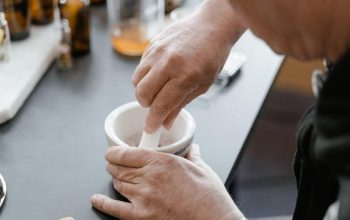KO-Machine Manual⁚ A Comprehensive Guide
This comprehensive guide provides detailed instructions and troubleshooting advice for various KO-machines. It covers operation, maintenance, safety, and advanced features. Explore model variations and access online resources for support. Information includes vacuum laminating machine operation, specific model details (e.g., KO-II), and software connectivity. Find solutions to common issues and learn advanced techniques. Access helpful online resources and support documentation to maximize your machine’s potential. Download manuals and access online communities for assistance.
The user-friendliness of KO-Machines varies depending on the specific model. Some, like the pocket-sized KO-II, might present a steeper learning curve due to their advanced features, while others offer simpler, more intuitive interfaces. Regardless of model complexity, a firm grasp of the fundamentals is essential for safe and effective operation. This section serves as a foundational guide, introducing the core concepts and principles common to all KO-Machines, setting the stage for a deeper dive into specific models and their individual operational procedures. Proper understanding ensures both efficient use and longevity of these sophisticated tools.
Types of KO-Machines⁚ A Detailed Overview
KO-Mag Vacuum Laminating Machine Operation
Operating the KO-MAG vacuum laminating machine requires careful attention to detail and adherence to the provided instructions. Before commencing any operation, ensure the machine is properly connected to a stable power source and that all safety precautions are observed. The process typically involves preparing the substrate, ensuring it is clean and free of debris. The OCA film, or other adhesive material, must be precisely aligned and positioned on the substrate before initiating the vacuum process. The machine’s controls will allow for adjustments to vacuum pressure and time, parameters that need to be optimized based on the specific materials being used. It’s crucial to consult the machine’s manual for recommended settings and operational procedures.
During the lamination process, continuous monitoring is essential to detect any anomalies. Unusual noises or vibrations might indicate problems requiring immediate attention. Once the lamination cycle is complete, allow the bonded layers to cool and cure properly before attempting to handle the finished product. Proper cooling prevents potential damage or delamination. Post-lamination inspection is recommended to verify the quality of the bond and to identify any defects. Cleaning the machine after each use is vital for maintaining its optimal performance and prolonging its lifespan. Refer to the manufacturer’s guidelines for appropriate cleaning procedures and the use of specific cleaning agents.
KO No1 OCA Vacuum Lamination Machine Usage
The KO No1 OCA vacuum lamination machine is designed for precise and efficient bonding of optical clear adhesive (OCA) films to LCD screens and other delicate components; Before operation, carefully inspect the machine for any damage and ensure all safety measures are in place. Proper grounding and adherence to electrical safety regulations are crucial. Begin by preparing the LCD screen, ensuring it is thoroughly cleaned and free of dust or contaminants. Precise alignment of the OCA film is critical to avoid bubbles or imperfections in the final bond. The machine’s control panel allows for adjustments to vacuum pressure, temperature, and lamination time, parameters that should be tailored to the specific materials being used and their recommended processing parameters. Consult the machine’s manual for detailed guidelines on optimal settings.
During operation, monitor the machine closely for any unusual behavior. Sounds or vibrations that deviate from normal operation should prompt immediate investigation. The manual provides troubleshooting guidance for common issues. Once the lamination cycle is completed, allow sufficient time for the adhesive to cure completely before handling the bonded assembly. Improper handling during the curing phase could compromise the bond’s integrity. Regular maintenance, including cleaning and lubrication of moving parts, is essential to maintain the machine’s performance and extend its service life. Refer to the manufacturer’s recommendations for specific maintenance procedures and schedules. Always prioritize safety and follow the instructions precisely to ensure optimal results and prevent damage to the equipment or the components being processed.
Safety Precautions and Maintenance
Prior to operating any KO-machine, ensure the area is well-ventilated and free from flammable materials. Always disconnect the power supply before performing any maintenance or cleaning. Wear appropriate personal protective equipment (PPE), including safety glasses and gloves, to protect against potential hazards. Regularly inspect power cords and connections for any signs of damage or wear. Replace damaged cords immediately. Never operate the machine with damaged parts; contact customer support or a qualified technician for repairs. Keep the machine clean and free of debris to prevent malfunctions and ensure optimal performance. Consult the manufacturer’s instructions for specific cleaning procedures and recommended cleaning agents. Avoid using harsh chemicals or abrasive materials that could damage the machine’s surfaces. Proper grounding is crucial to prevent electrical shocks. Ensure the machine is properly grounded before each use. Regular lubrication of moving parts, as recommended in the machine’s manual, will help maintain smooth operation and extend the machine’s lifespan. Proper maintenance is essential for both safety and optimal machine performance.
Store the machine in a clean, dry environment when not in use. Protect the machine from extreme temperatures and humidity. Regularly check for loose connections and tighten them as necessary. Keep the machine’s manual readily available for reference. If any unusual noises or vibrations occur during operation, immediately stop the machine and investigate the cause. Do not attempt to repair the machine yourself unless you are properly trained and qualified. Contact customer support or a qualified technician for assistance with any repairs or maintenance that you are not comfortable performing. Adherence to these safety precautions and a consistent maintenance schedule will ensure the longevity and safe operation of your KO-machine.
Troubleshooting Common Issues
If your KO-machine fails to power on, first check the power cord and ensure it is securely connected to both the machine and a functioning power outlet. Verify that the power outlet is working correctly by testing it with another device. If the machine is still unresponsive, consult the machine’s manual for further troubleshooting steps or contact customer support. Should the machine overheat, immediately turn it off and allow it to cool down completely before attempting to use it again. Ensure adequate ventilation around the machine. If the machine is making unusual noises, such as grinding or clicking sounds, immediately stop operation and inspect for any loose parts or obstructions. If you find any damaged components, do not attempt to repair them yourself; contact customer support or a qualified technician for assistance. In cases of inconsistent performance, such as intermittent operation or malfunctioning features, check all connections and ensure that all cables are securely plugged in. Review the machine’s manual for instructions on how to reset the machine or perform a system diagnostic. If problems persist after trying these troubleshooting steps, contact customer support for further assistance. Detailed troubleshooting guides may be available online or in the machine’s accompanying documentation. Remember to always disconnect the power supply before performing any internal inspections or repairs.
Keep a record of any error messages displayed on the machine, as this information can help in diagnosing the problem. If you are unable to resolve the issue yourself, contact customer support. Provide them with a detailed description of the problem, including any error messages, along with the model number of your KO-machine. They can offer specific guidance based on your machine’s model and the nature of the problem. Always prioritize safety and avoid attempting repairs beyond your skill level. Remember, a well-maintained KO-machine is a reliable machine, and timely troubleshooting can prevent more serious issues.
Advanced Features and Techniques
Unlock the full potential of your KO-machine by exploring its advanced features and techniques. Many KO-machines offer customizable settings to optimize performance for various tasks. Experiment with different pressure levels, temperature settings, and processing times to achieve the desired results. Some models might include advanced control features, such as programmable timers or automated sequences. Familiarize yourself with these functions to streamline your workflow. For precision work, consider using specialized accessories or attachments that may be available for your specific KO-machine model. These accessories can enhance the machine’s capabilities and allow for more intricate operations. Advanced techniques often involve understanding the nuances of material properties and how different settings affect the final outcome. Experimentation is key to mastering these techniques, but always prioritize safety and follow recommended procedures. Consider seeking online tutorials or attending workshops to further enhance your skills. Online communities dedicated to KO-machines are excellent resources for sharing tips and tricks from experienced users. These forums often feature detailed discussions of advanced techniques and troubleshooting common challenges. Advanced features often require a more in-depth understanding of the machine’s functionality and capabilities. By taking the time to learn these advanced features and techniques, you can maximize the efficiency and effectiveness of your KO-machine.
Understanding Specific Model Variations (e.g., KO-II)
Software and Connectivity Options
Many modern KO-machines offer sophisticated software integration and connectivity options to enhance functionality and control. Explore the software options available for your specific model. This might include dedicated control software for precise parameter adjustments, data logging capabilities for tracking process parameters, and firmware updates to improve machine performance and add new features. Some KO-machines may offer connectivity options such as USB, Ethernet, or Wi-Fi, allowing for remote control and data transfer. This can be particularly useful for monitoring machine status, adjusting settings remotely, and collecting data for analysis. If your model supports software integration, consult the manufacturer’s documentation for details on software installation, configuration, and usage. Proper software installation and configuration are crucial for optimal performance and to ensure compatibility with your operating system. Familiarize yourself with the software interface and its various features to effectively control and monitor your KO-machine. Regularly check for software updates to benefit from bug fixes, performance improvements, and new functionalities. The manufacturer’s website is usually the best source for the latest software releases and updates. Explore the available connectivity options to determine how best to integrate your KO-machine into your existing workflow and data management systems. Proper utilization of software and connectivity options can significantly enhance efficiency and data analysis for your projects.


